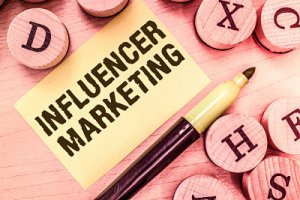Load up your bookshelf
May 8, 2019
 I’ve been working in marketing and advertising since the mid-80s. When I started my career, I thought I had a lot to learn. It was nothing compared to what we all need to learn today. Technology is driving the rate of change, and even though it’s hard to believe, it’s going to get nothing but faster. No matter how long we’ve been in the business – if we want to stay relevant and effective, we have to commit to continual learning and experimenting. So, get ready to load up your bookshelf.
I’ve been working in marketing and advertising since the mid-80s. When I started my career, I thought I had a lot to learn. It was nothing compared to what we all need to learn today. Technology is driving the rate of change, and even though it’s hard to believe, it’s going to get nothing but faster. No matter how long we’ve been in the business – if we want to stay relevant and effective, we have to commit to continual learning and experimenting. So, get ready to load up your bookshelf.
Given that we all have a long weekend coming up with Memorial Day, I thought it might be a good time for me to make some reading suggestions so you can load up your bookshelf, Kindle or Audible account, depending on how you like to read. No matter how loaded your calendar is over the long weekend, you can probably get a good jump on one or two of these.
Some of these suggestions are hot off the press, and others have earned their classic status over time. I’ve tried to give you a good blend of focus areas, points of view and authors.
Location is Still Everything by David Bell
This book is very research-based and looks at how location influences our buying decisions online and in our local market. It’s a much better read than it sounds because the data is demonstrated and explained through some wonderful storytelling.
Permission Marketing by Seth Godin
This golden oldie is remarkably on point today, twenty plus years after it was published. Godin preaches the idea of adding and offering value to earn trust, as opposed to post-sale. The concepts are ridiculously simple to grasp, and yet very few businesses can get out of their own way enough to implement them consistently.
Killing Marketing by Joe Pulizzi and Robert Rose
This book was published about a year or so ago and suggests that marketing can actually be a source of revenue versus an expense. There’s a catch to that equation of course, but this book creates a vision of what is possible and if they’re right, what is the inevitable future of marketing.
Crisis Ready by Melissa Agnes
Melissa Agnes draws from her experience in helping global brands, government organizations, and world leaders prevent and overcome a range of real-world, high-impact crises. No matter the size, type, or industry of your business, Crisis Ready will provide your team with insight into how to get prepped for a crisis and know how to handle it if/when it comes.
Talk Triggers by Jay Baer & Daniel Lemin
This book came out last October and this is a not to be missed read. Jay and Daniel have written a step-by-step tutorial on how to leverage word of mouth, ratings, and reviews to earn new customers and secure the ones you already have.
I Love You More Than My Dog by Jeanne Bliss
Bliss led the customer services teams at Land’s End, Allstate, and Coldwell Banker and in this book, she defines the five decisions that drive extreme customer loyalty that transcends good times and bad. Bliss is a master storyteller which makes this a fun and quick read.
If we want to be effective marketers, we can’t afford to stop learning. If reading isn’t your thing, then head to YouTube. Most of these authors also have their own YouTube channel and you can still benefit from their insights. But remember, just like Harry Potter, the movie can never cover everything that the book does. If you genuinely want to keep your saw sharp, crack open a book over the Memorial Day weekend and work your way through this list.
More







